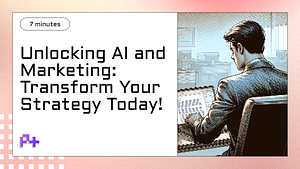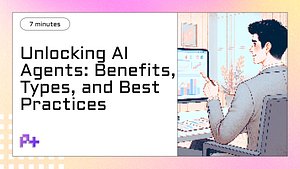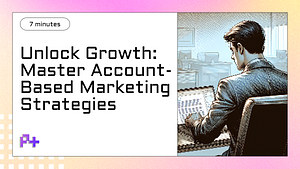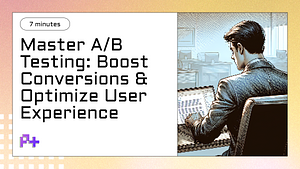1. What Is AI Art and How Does It Work?
AI art refers to artwork generated by artificial intelligence algorithms, utilizing various techniques to create images, paintings, or graphics that mimic traditional artistic styles or craft entirely new visuals. At its core, AI art leverages machine learning models, particularly those trained on vast datasets of existing images, to understand and replicate patterns, colors, and styles. This technology has evolved significantly in recent years, allowing artists and creators to experiment with innovative forms of expression. AI image prompts serve as the starting point for these creations, guiding the AI in generating visuals that align with specific themes or concepts.
The process of creating AI art typically begins with the input of an AI image prompt, which can be a simple phrase, a detailed description, or a combination of both. These prompts inform the AI about the desired outcome, enabling it to produce images that resonate with the provided context. For instance, a prompt like a futuristic cityscape at sunset can yield a variety of unique interpretations, showcasing the AI's ability to blend imagination with learned artistic principles. As the AI processes the prompt, it analyzes its training data to generate new images that reflect the nuances of the request, demonstrating both creativity and technical prowess.
Moreover, AI art not only democratizes the creative process by enabling individuals without traditional artistic skills to produce compelling visuals but also raises intriguing questions about authorship and originality in the digital age. As more artists incorporate AI-generated images into their work, the lines between human creativity and machine-generated content blur. This intersection of technology and artistry continues to inspire discussions about the future of creative fields, making AI image prompts a crucial part of the ongoing evolution in how art is created, perceived, and valued.
2. How to Craft Effective AI Art Prompts
Crafting effective AI art prompts is essential for generating high-quality images that align with your creative vision. The first step in creating an impactful prompt is to be specific about the subject matter and style you want the AI to emulate. For instance, instead of simply requesting a landscape, you might specify a serene mountain landscape at sunset with a clear sky. This level of detail helps the AI understand your expectations better, leading to artwork that closely matches your desires. Additionally, consider incorporating stylistic references, such as in the style of Van Gogh or as a digital painting, to guide the AI's artistic approach.
Another critical element in crafting prompts is the use of descriptive language that evokes a strong visual imagery. Utilizing adjectives and adverbs can significantly enhance the richness of your prompts. For example, instead of saying a cat, try a fluffy orange cat lounging lazily in a sunbeam. This not only paints a clearer picture for the AI but also makes the generated art more engaging and visually appealing. Including emotional or thematic elements, such as a whimsical forest filled with magical creatures, can also inspire the AI to create more dynamic and imaginative compositions.
Finally, iterating on your prompts is key to refining the output of AI-generated art. Experiment with different wordings, styles, and levels of detail to see how they impact the results. If your first attempt doesn’t yield the desired outcome, don’t hesitate to tweak your prompt. Try to analyze what aspects of the prompt might be too vague or unclear. Engaging with the AI iteratively will not only help you discover new creative avenues but will also enhance your understanding of how to communicate effectively with AI systems. By following these guidelines, you can master the art of crafting effective AI art prompts and unlock the full potential of AI-generated imagery.
3. Best AI Art Generators to Try
When it comes to creating stunning visuals using AI image prompts, several art generators stand out in the crowded digital landscape. These tools harness the power of artificial intelligence to transform textual descriptions into captivating images, making them invaluable for artists, marketers, and content creators alike. Here, we’ll explore three of the best AI art generators that can elevate your creative projects.
One of the most popular AI art generators is DALL-E 2 by OpenAI. This innovative tool allows users to input detailed prompts, generating images that often exceed expectations in terms of creativity and realism. DALL-E 2 supports various styles, from photorealistic to abstract art, making it a versatile choice for different artistic needs. Users can experiment with unique prompts to see how the AI interprets their ideas, resulting in truly one-of-a-kind creations. The user-friendly interface further enhances the experience, allowing even those with minimal technical skills to produce impressive art quickly.
Another noteworthy option is Midjourney, known for its community-driven approach and stunning artistic style. This AI art generator operates through Discord, where users can interact with the bot by typing in prompts and receiving visually striking images in return. Midjourney excels in producing ethereal and highly stylized artworks, appealing to those looking for a more artistic flair. Additionally, the platform encourages collaboration and feedback from a vibrant user community, allowing creators to refine their prompts and share inspiration, making it a fantastic resource for both novice and professional artists.
Lastly, NightCafe Studio offers a robust set of features tailored for users seeking to explore different art styles and techniques. With its extensive library of algorithms and a wide range of customization options, NightCafe allows users to generate images from text prompts while applying various artistic styles, such as impressionism, cubism, and more. This flexibility makes it an ideal tool for artists who want to experiment with different aesthetics. NightCafe also includes a social aspect, where users can showcase their work, participate in challenges, and gain inspiration from others, fostering a sense of community among AI art enthusiasts.
In summary, whether you're looking for realistic renderings, artistic masterpieces, or a collaborative environment, these AI art generators—DALL-E 2, Midjourney, and NightCafe Studio—provide excellent platforms to unleash your creativity through AI image prompts. Each tool offers unique features and styles, ensuring that artists of all levels can find the perfect fit for their creative vision.
4. Tips for Getting the Best AI Images
When it comes to generating stunning visuals using AI image prompts, understanding how to craft effective prompts is crucial. Start by being as specific as possible about the image you envision. For instance, instead of simply requesting a dog, try a golden retriever playing fetch in a sunny park. This level of detail helps the AI understand your vision better, leading to more accurate and vibrant results. Additionally, consider including elements like style, color palette, and mood to further refine the output. The more context you provide, the better the AI can cater to your needs.
Experimentation is another key factor in getting the best AI images. Don’t hesitate to try different variations of your prompts to see how slight changes can yield distinct results. For example, altering the action from playing to sitting or specifying a different environment, such as in a city instead of in a park, can lead to unexpected and delightful creations. Keep track of what kinds of prompts work best, as this will enhance your ability to generate images that align with your creative goals over time.
Finally, leveraging the power of community can significantly improve your experience with AI image generation. Many online forums and social media groups are dedicated to sharing successful prompts and tips for using AI tools effectively. Engaging with these communities not only provides inspiration but also exposes you to diverse techniques and methods that can enhance your own prompting skills. By combining detailed and experimental prompts with insights from fellow creators, you can unlock a world of possibilities in AI-generated imagery, ensuring that you consistently receive high-quality results tailored to your artistic vision.
5. Frequently Asked Questions About AI Art Prompts
As the use of AI image prompts continues to gain popularity among artists and creators, many individuals have questions about how to effectively utilize these tools. One common question is, What exactly are AI image prompts? In essence, these prompts are textual or visual cues that guide artificial intelligence models in generating images. They can range from simple descriptions to intricate scenarios. By providing specific details, such as styles, themes, and elements, users can influence the final output, resulting in artwork that aligns with their creative vision. Understanding the mechanics behind AI art prompts is crucial for anyone looking to harness the power of AI in their artistic endeavors.
Another frequently asked question revolves around the best practices for creating effective AI image prompts. To maximize the potential of AI-generated art, users should focus on clarity and specificity. Including adjectives, emotions, and context can significantly enhance the quality of the output. For example, instead of a vague prompt like a cat, a more detailed prompt such as a fluffy ginger cat lounging in a sunlit garden will yield a more vibrant and specific image. Experimenting with various prompt structures and continuously refining them based on the results can lead to stunning and unique artworks. Additionally, checking out online communities and resources can provide inspiration and tips tailored to your artistic style.
Lastly, many users wonder about the copyright implications of using AI-generated images created from prompts. As the legal landscape surrounding AI art is still evolving, it’s essential to stay informed about the ownership rights associated with AI-generated content. Generally, the person who creates the prompt holds some rights, but the specifics can vary depending on the platform used. If you’re planning to use AI-generated images commercially, it’s advisable to review the terms of service of the AI tool and consult legal resources or professionals to ensure compliance and protect your creative work. Understanding these nuances not only empowers artists but also fosters a more responsible and ethical approach to using AI in art.



